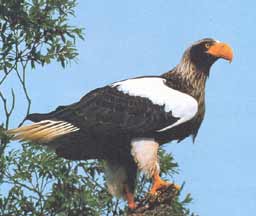4. Fuglelivet
på Kamchatka
Luftens
konge : Steller's havørn
| |
Mer
enn 50 prosent av verdens Steller's havørner (Haliaeetus
pelagicus) hekker på halvøya.
Ingen annen fugl i Kamchatka kommer opp mot Steller's havnørn
i skjønnhet og majestet.
Steller's havørn holder til langs kysten på begge
sider av Kamchatka.
Dens uforholdsmessige store nebb og kjempeklør can forårsake
dødelig sår på rådyr eller
sauer;og de er spesialister i å fange laks.
Steller's havørn er en av de fremste i russisk fuglefauna
med sitt utbredte vingespenn på opp
til 2,5 meter, og størrelsen på dens rede er sansynligvis
usammenlignbart. I Kronotsky
Zapovednik (nasjonal park) har man funnet et gammelt reir på
nesten 2 meters høyde og
med en diameter på 3 meter! |
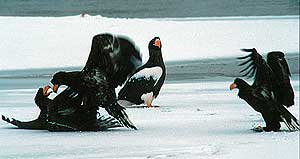
Steller's
Eagle discussing whose turn to eat next.
Courtesy: http://www.kamchatkapeninsula.com/
| |
En ørn legger vanligvis
to egg, men bare en av de to ungene vokser seg store nok til
å begynne
å flakse med vingene. Steller's havørn er meget
forsiktig og følsom med hensyn til sitt "privatliv".
De finnes dessuten bare på Kamchatka-halvøya. Man
anslår at det er over 4.000 fugler igjen,
med omkring 1.000 hekkende par, og man håper dette antall
kan bevares - altså med mindre
menneskene starter sin "seiersrike" framgang gjennom
det ville Kamchatka.
(I det ligger vår jakt på alle de naturlige ressurser,
som mineraler og skogsdrift.) |
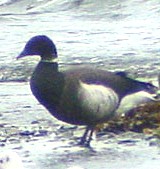

Black
brant (Branta nigricans) and the golden eagle (Aquila chrysaetos)
I Nalychevsky natur park, en av de tre regionale
naturparker, i Nalycheva elvedalen,
omgitt av Zupanovsky, Koryaksky, Avachinsky
og Dzenzur vulkanene,
finnes sjeldne arter som bl.a. inkluderer black brant
(Branta nigricans), Steller's havørn
(Haliaeetus pelagicus), hvithalet havørn, gyrfalcon
(Falco rusticolus) ,peregrine falcon
(Falco peregrinus) og the golden eagle (Aquila chrysaetos).
Out on the Commander Islands, about sixty bird species nest,
and approximately one hundred more use the islands as stopovers
on their migratory routes.
Of notes is the intermingling of American and Euroasian species,
and the high overall bird populations.


Whooper swan, Cygnus cygnus
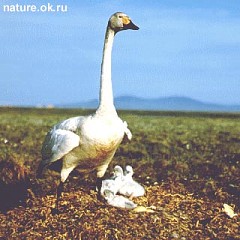

Bewick's
swan, Cygnus bewickii
Photo: © Kondratsjev A. Jakovievisj and ©
Arbusov E. Valentinovisj
All pictures from "Endangered Animals of Russia:
from knowledge to action (www.nature.ok.ru)"

Bewick's swan, Cygnus bewickii
more text to come
---------------------------------------------------------------------------------------

Gyrfalcon,
Falco rusticolus
Gyrfalcon, Falco rusticolus
click here
---------------------------------------------------------------------------------------

Peregrine
falcon, Falco peregrinus
Photo: © Tom Holden
Peregrine falcon, Falco peregrinus
A large robust falcon with tapered tail and long, angular wings,
found on both coastal and
inland cliffs. Adults have slate-grey upper parts with paler rump
and delicately barred tail.
Peregrines swoop on their prey of pigeons, seabirds and grouse from
height at
speeds of 150 - 250 Km/h!

Nordmann's
greenshank, Tringa guttifer
Photo from Shiokawa
Tidalflat Preservation Association
Nordmann's greenshank, Tringa guttifer
This species has a very small, declining population as a result
of the development of coastal
wetlands throughout its range, principally for industry, infrastructure
projects and aquaculture.
It therefore qualifies as Endangered.
Identification: 29-32 cm. Medium-sized sandpiper with slightly upturned,
bicoloured bill and
shortish yellow legs. Breeding adults are boldly marked, with whitish
spots and spangling on
blackish upperside, heavily streaked head and upper neck, broad
blackish crescentic spots
on lower neck and breast and darker lores. In flight, shows all-white
uppertail-coverts and
rather uniform greyish tail. Toes do not extend beyond tail tip.
Juvenile is browner above
than non-breeding adult, has whitish notching on scapular and tertial
fringes, pale buff
wing-covert fringes and faintly brown-washed breast with faint dark
streaks at sides.
Text above from www.birdlife.net
---------------------------------------------------------------------------------------


Spoon-billed
sandpiper, Calidris pygmaeus (?)
Photo by: PIPAT SUTHIWISADESAK


Spoon-billed
sandpiper, Eurynorhynchus pygmaeus
© Photo: C. Zöckler, Chukotka, 2000 and © Photo:
Chris Schenk 2000
Spoon-billed sandpiper, Eurynorhynchus pygmaeus
click here
---------------------------------------------------------------------------------------

Aleutian
tern, Sterna kamtschatica
© www.nature.ok.ru
Aleutian tern, Sterna kamtschatica
mere
tekst her
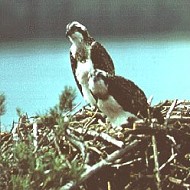
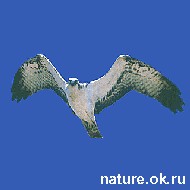
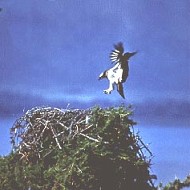
Osprey,
Pandion haliaeetus
Photo: © Lubis Arunas, © Kaso Vladimir Nikolaevisj
and © Jakusjkin Vladislav Timofeevitsj
All pictures from "Endangered Animals of Russia: from knowledge
to action (www.nature.ok.ru)"

mere
tekst her

White-tailed
sea eagle, Haliaeetus albicilla
Photo: © Khabrij W. Mikhajlovitsj
Picture from "Endangered Animals of Russia: from knowledge
to action (www.nature.ok.ru)"

White-tailed
sea eagle, Haliaeetus albicilla
more
text here
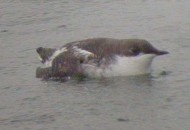
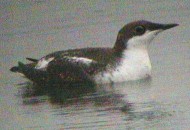
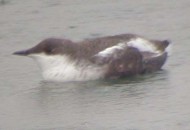
Long-billed murrelets, Brachyramphus
perdix
A picture of the Long-billed murrelets was not easy to find,
so thanks to
Jay and © Kevin J. McGowan.
Long-billed murrelets, Brachyramphus perdix
more text to come

Slaty-backed
gull, Larus schistisagus
© www.muratasystem.or.jp/~rausu/
Slaty-backed gull, Larus schistisagus
more text to come
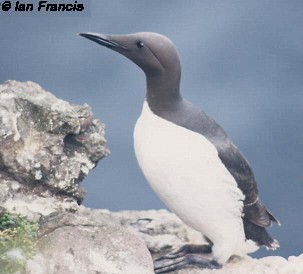

Murres,
Uria aagle, Uria lomvia
 Dickschnabellumme
Dickschnabellumme  Guillemot de Brünnich
Guillemot de Brünnich
Photo © Ian Francis from wildlifeweb.co.uk and ©
Hallvard Strøm, Norsk Polarinstitut
Murres, Uria aagle, Uria lomvia
more text to come

Tufted
puffins, Fratercula cirrhata
Photo:
Patuxent Wildlife Research Center, USGS
Tufted puffin, Fratercula cirrhata
text to come
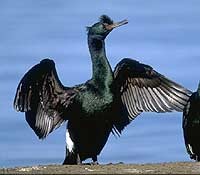

Pelagic
cormorants, Phalacrocorax pelagicus
Photo: © filin.km.ru
and © Lasse J. Laine
Pelagic cormorant, Phalacrocorax pelagicus
See also Cormorants here at www.vulkaner.no
and the Spectacled Cormorant at www.vulkaner.no
more text to come
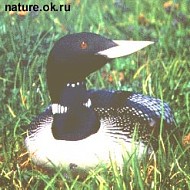
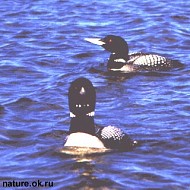
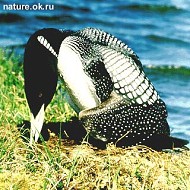
Yellow-billed
loon, Gavia adamsii
Photo: © Solovev M. Jurevisj, © Solovev M. Jurevisj
and © Tomkoritsj P. Stanislavovitsj
All pictures from "Endangered Animals of Russia: from knowledge
to action (www.nature.ok.ru)"

Yellow-billed loon, Gavia adamsii
text to follow
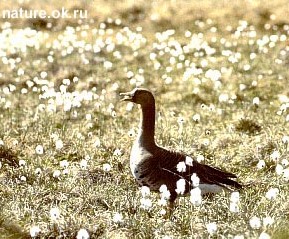

Lesser
white-fronted goose, Anser erythropus
Photo: © Kretsjmar A. Vasilevitsj and © Ovsjaikov
I. Gordeevitsj
All pictures from "Endangered Animals of Russia: from knowledge
to action (www.nature.ok.ru)"

Lesser white-fronted goose, Anser erythropus
more text to come
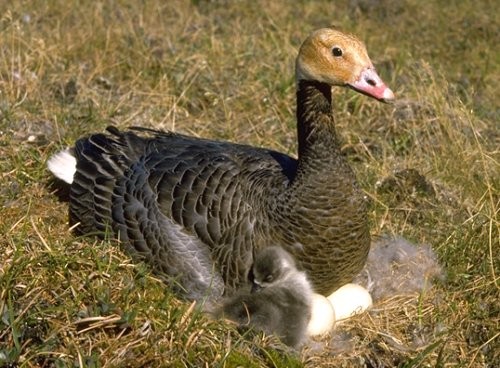
Emperor
goose, Anser canagicus
Photo: P.
Tomkovich, Arctic Bird Library
Emperor goose, Anser canagicus
Native to north-west Alaska and north-eastern Siberia, these
beautiful birds are often raised
by aviculturalists. Sexes are marked the same but the females are
slightly smaller.
They breed along the coast where they feed mostly on seaweeds, plus
some small marine
animal life. Incubation of the 3—8 cream-colored eggs takes
24—25 days.
The grey goslings are fully feather within 3 weeks.
After breeding season, the birds move to the tundra, where they
survive on grasses and berries.
More pictures here: www.feathersite.com
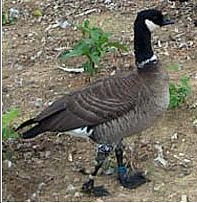
Aleutan
Canadian geese, Branta minima leucopareia or Branta canadensis
leucopareia?
Aleutan
Canadian goose, Branta minima leucopareia
Small goose with gray breast, black neck and front of head,
white cheek patches that don't
meet under the throat, and large white neck band; male and female
are marked the same
Most of the population today is limited to wildlife refuges
Nest Site in grass near water on a rise; nest guarded by male and
female prior to setting,
by male after setting begins
1750 First known introduction of foxes onto Aleutian Islands was
supposedly made to
make their capture easier and their escape less likely because of
the water barrier
surrounding the island.
1750-1936 Arctic foxes and red foxes
were introduced to at least 190 islands within the
breeding range of the Aleutian Canada goose in Alaska.
1811 First complaints were received from Aleut Natives that foxes
had caused severe declines
in birds that had once been numerous.
1938-1962 Aleutian Canada geese were not found on any of the islands
where they historically
nested and were thought to be extinct.
1963 Fish and Wildlife Service biologists found a remnant population
on remote Buldir Island in
the western Aleutian Islands. The population was estimated at between
200 and 300 birds.
1999 The population exceeded 30,000 geese, over four times the original
goal for delisting.
Above history from "Road to Recovery for the Aleutian Canada
Goose"
---------------------------------------------------------------------------------------



Bald
eagle, Haliaeetus leucocephalus
Photo: Patuxent
Wildlife Research Center, USGS
Bald eagle, Haliaeetus leucocephalus
click here
---------------------------------------------------------------------------------------

Spectacled
cormorant, Phalacrocorax perspicillatus
Spectacled cormorant, Phalacrocorax perspicillatus
click
here
---------------------------------------------------------------------------------------

Rock
Ptarmigan,summer
Photo: © 1999, Masashi
Koizumi
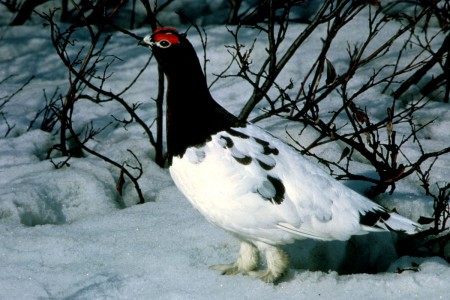
Rock
Ptarmigan, winter
Photo: Karen
Bollinger/USFWS
Rock Ptarmigan, Lagopus mutus
The adult rock ptarmigan is a medium sized, stocky, round-winged
Arctic bird that stands about
15 inches tall and looks like a small grouse or pheasant. The female
Rock Ptarmigan is slightly
smaller than males. In the winter they are pure white except for
their black eyes, black bill and
a black stripe between the eyes and bill that is present in both
sexes all year. Both the male
and female ptarmigan have stripes with brown and black markings
in summer with a white belly
and wings. Their square shaped tail and beak are black. Also the
male has a red comb over its
eyes. Males and some females have black eyeliner. Birders distinguish
the Rock Ptarmigan from
the plumage of the White-tailed Ptarmigan by its black, not white,
tail. Male Willow Ptarmigans
have a redder plumage.
The adult ptarmigans prefer vegetables in summer eating a mix of
different plant materials like
blueberries, horse tail tips, crow berries, mountain plants of the
rose family and the heads of
sedges. Winter food consists mostly of buds and catkins of small
birch, and some willow buds
and twigs. The immature ptarmigans feed heavily on insects, spiders,
and snails.
The birds build their nest on the ground in a shallow scraped out
hole by a bare rocky outcrop.
They line the nest with some feathers and plant material. Because
they need some overhead
protection from flying predators they place the nest near a large
rock.
Text above from
Arctic Wildlife, By Fred J. Kane
more to follow
Text and pictures on this page: Courtesy: http://www.kamchatka.org.ru
more
to follow
Text and pictures on this page: Courtesy:
http://www.kamchatka.org.ru
 Tilbake
til menyen - Fortsettes her:
Tilbake
til menyen - Fortsettes her:

